The concept of yin and yang has a long history. The theory of yin and yang was formed as early as the Xia Dynasty. There are many written records of Yin-Yang, some dating back to the Yin Dynasty (1400-1100 BC) and the Western Zhou Dynasty (1100-771 BC).
The concept of yin and yang originated from the ancients’ view of nature. The ancients summed up the concept of “yin and yang” in a philosophical way of thinking from the observed natural phenomena, such as sky and earth, sun and moon, day and night, cold and hot, summer and winter, men and women, upper and lower, etc.

All forces in the universe can be classified as yin or yang energy. It is believed that anything can be divided into two, which are yin and yang. The two opposites of yin and yang were the source of all things in the universe. Yin and yang elements appear in pairs, such as moon and sun, male and female, dark and bright, cold and hot, passive and active, etc. In general, yin is characterized by inner energy, which is feminine, still, dark and negative. Yang, on the other hand, is characterized by outward energy, masculine, fiery, bright and positive.
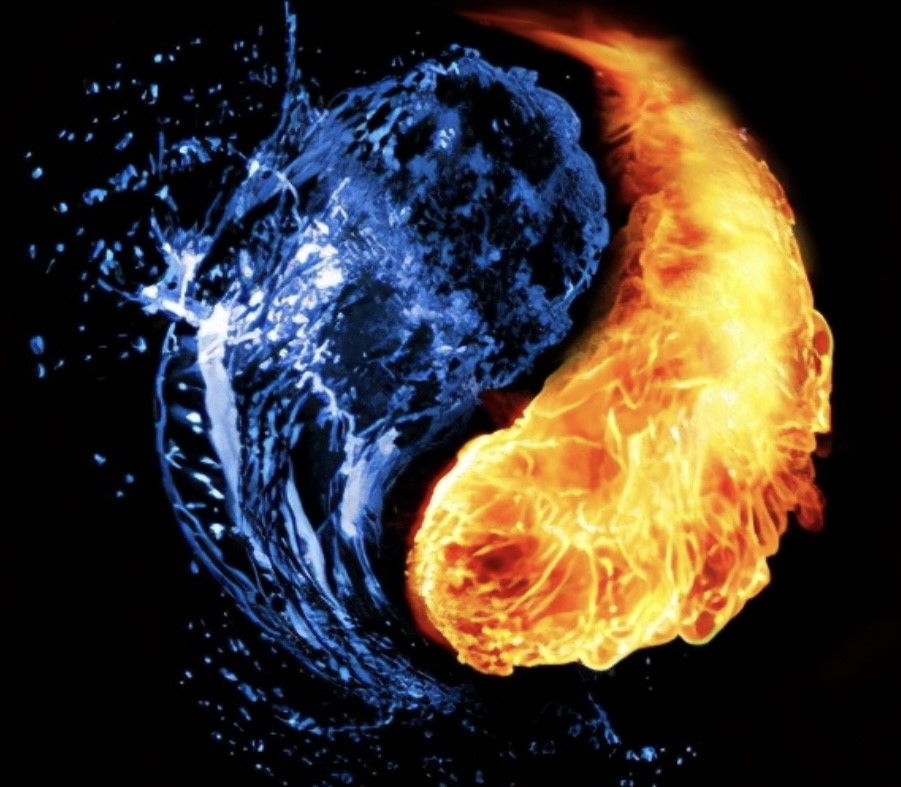
Yin and yang are not static or mutually exclusive. The world is made up of many different and sometimes opposing forces, but they can coexist and even complement each other. Sometimes opposing forces in nature even rely on each other. Like the positive and negative forces in electricity, Yin and yang represent two contrary forces that may be complementary, interconnected, and interdependent. The essence of yin and yang is in the interchange and interaction of these two components. For example, without day there is no night, without winter there is no summer, and without light, there is no shadow.
Yin and Yang refer to the two opposing but interdependent forces that exist in the world; the five elements are composed of the movement and changes of the five basic substances of “wood, fire, earth, metal and water”, which emphasize the overall concept. The confluence of yin and yang and the five elements form the framework of traditional Chinese philosophy.
The presentation of Yin-Yang:
Origin of Yin-Yang
Yin-Yang originates from the Taiji symbol, so before understanding the origin of yin and yang, we need first to understand the Taiji symbol. Taiji(T-AY-j-ee) symbol, also referred to as the Tai Chi symbol, is from I-Ching. The I-Ching is the most significant foundation of Ancient Chinese philosophy.
Tai Chi is formed by the ancients observing the dynamic changes of various natural worlds. The ancients measured the changes in the sun’s shadow in a certain year according to the 24 solar terms and connected these data to form a Tai-Chi symbol.
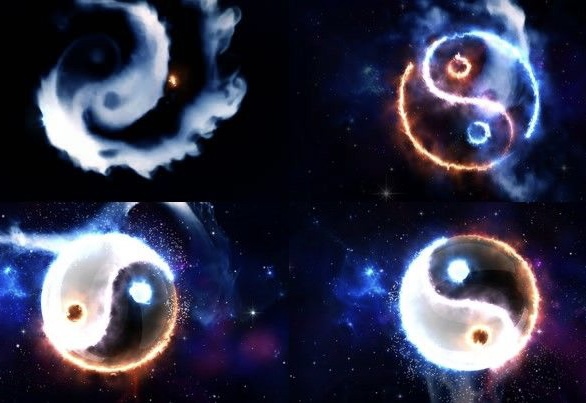
It can be seen from the Tai Chi symbol that the state from decline to prosperity is called yang, and the state from prosperity to decline is called yin.
For example, In one whole year, the first half year is yang, and the second half year is yin, they are not separate and independent, but different parts of the same thing.
After understanding the origin of the Tai Chi diagram, you will know what is the correct Tai Chi diagram. Most of the tai chi symbols we can see now are artistic Tai Chi symbols, which cannot express the true meaning of Tai Chi. The picture below is the Fuxi‘s Tai-chi symbol, Fuxi(伏羲, Fu Hsi) is a Chinese cultural hero and sage.
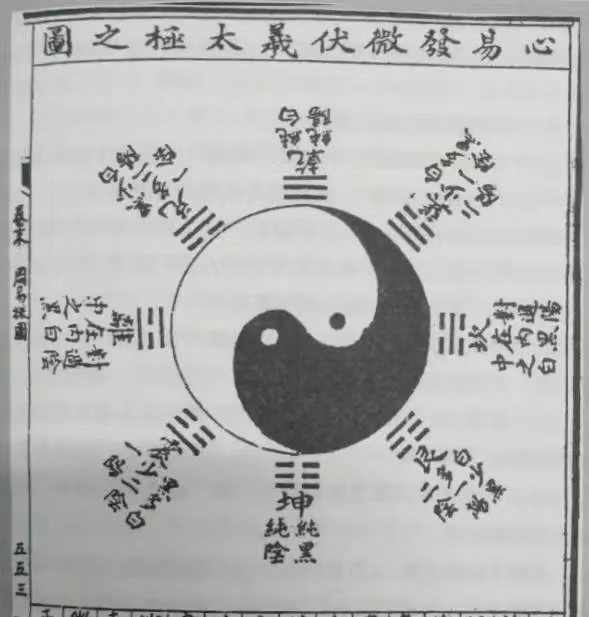
In this diagram, a curved line divides it in half, forming half white and half black. The white part represents yang, and the black part represents yin. There is a black dot in the white part, and a white dot in the black, which means that there is yin in yang and yang in yin. The separated two halves are like two fish, so they are commonly known as yin and yang fish.
The radius at the bottom of the Taiji map is completely black, which means that the yin energy reaches its peak, which represents the winter solstice in the twenty-four solar terms, and it is also the Zi Shi(11:00pm – 1:00am). Then, the yang energy begins to rise, and the white part begins to increase slowly.
When yang Qi rises, yin Qi falls. In traditional Chinese culture Qi(also known as chi or ki) is believed to be a vital life force forming part of all things in the universe.
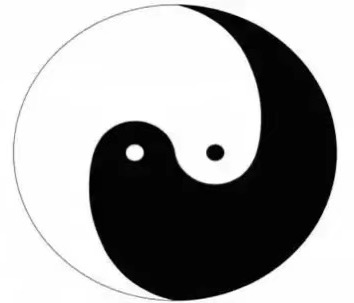
When the white part of the radius grows to be the same as the black, the yang Qi rises by half, and it is exactly in the east. At this time, the length of day and night are the same, which is the spring equinox in the twenty-four solar terms, and it is also the Mao Shi(5:00am – 7:00am).
When the white part continues to rise directly above, the yin Qi disappears and the yang qi reaches its peak. At this time, the day is the longest and the night is the shortest. It is the summer solstice in the twenty-four solar terms, and it is also Wu Shi(11:00am – 1:00pm) in the day.
Since the white part has reached the extreme, then the white part starts to decrease and the black part starts to grow. When the whiteness of the radius falls to the same level as the blackness, the yin qi rises by half, and it is exactly in the west. At this time, the length of day and night are the same, which is the autumnal equinox in the twenty-four solar terms, and the You Shi(5:0 pm – 7:00pm).
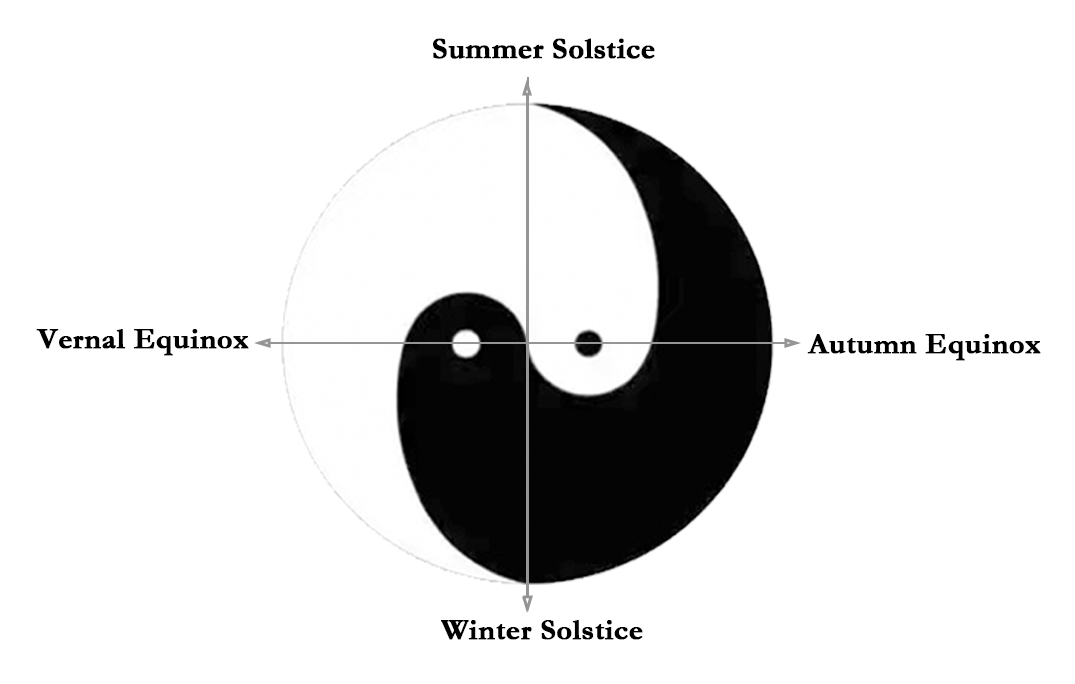
The ancient Taiji diagram can quantify yin and yang, but the popular Taiji diagram we see now cannot be quantified, so it is not accurate.
White continues to decline until it disappears and then returns to its original position, over and over again.
The Balance of Yin and Yang
The balance of yin and yang is very important. If yin is strong, yang will be weak, and vice versa. When yin and yang are in harmony, all things grow. Yin and yang can transform into opposites when their energy reaches a peak.
The yin-yang symbol consists of a circle divided into two halves by a curved line. Half of the circle is black, which usually represents the yin part. The other is white and used for the yang part.
The dots of each colour are located near the centre of the other half. The two halves are thus intertwined in a spiralling curve that divides the whole into semi-circles, and the small dots represent the idea that each carries the other’s seed.
White dots in black areas and black dots in white areas indicate the coexistence and unity of opposites. The curved line indicates that there is no absolute separation between the two opposites. Thus, the yin-yang symbol embodies the unity of both sides: duality, paradox, diversity, change and harmony.